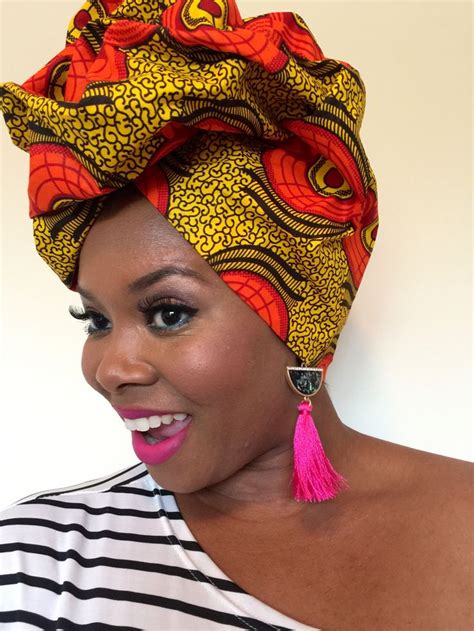A Rich Cultural Tapestry: The Significance of African Head Wraps
African head wraps, a vibrant expression of cultural identity, have adorned the heads of countless women for centuries. Embodying rich symbolism, these wraps hold immense spiritual, social, and personal significance.

- According to the World Bank, over 1 billion people live in Africa, making it the second-most populous continent.
A Kaleidoscope of Styles: Exploring the Diversity of African Head Wraps
The African continent boasts a breathtaking array of head wrap styles, each with its own unique charm and regional significance. From the elegant “gele” of Nigeria to the vibrant “duku” of Ghana, these wraps showcase the continent’s vast cultural diversity.
- A study by the African Union estimates that there are over 2,000 distinct ethnic groups in Africa, each with its own traditions and customs.
The Art of Head Wrapping: A Step-by-Step Guide
Mastering the art of African head wrapping requires patience and practice. Here’s a step-by-step guide to help you achieve flawless results:
- Choose Your Fabric: Select a fabric that complements your outfit and personal style. Silk, cotton, and Ankara prints are popular choices.
- Create a Base: Gather your hair into a bun or ponytail. This will provide a foundation for the wrap.
- Place the Fabric: Drape the fabric over your head, aligning one edge with the center of your forehead.
- Secure the Back: Bring the ends of the fabric together at the nape of your neck and tie them securely.
- Adjust the Style: Depending on your desired style, you can adjust the wrap by twisting, tucking, or folding the fabric.
Uncovering the Spiritual Meaning of African Head Wraps
Beyond their aesthetic appeal, African head wraps also hold deep spiritual significance. In many cultures, they represent:
- Wisdom and Maturity: Head wraps symbolize knowledge, experience, and wisdom gained through life.
- Identity and Lineage: The colors and patterns of head wraps can indicate a person’s tribe, clan, and family lineage.
- Protection and Abundance: Wraps are believed to protect the wearer from evil spirits and bring blessings of prosperity.
African Head Wraps in Contemporary Fashion
Today, African head wraps are not only a symbol of tradition but also a versatile fashion accessory. Designers and celebrities alike have embraced this vibrant trend, incorporating it into modern styles and creating stunning fashion statements.
- In 2020, the global fashion industry generated $2.5 trillion in revenue, highlighting the growing popularity of unique and culturally diverse designs.
Tables for Reference
| Style | Origin | Significance | Popular Fabric |
|---|---|---|---|
| Gele | Nigeria | Traditional wedding headwear | Velvet, lace, silk |
| Duku | Ghana | Symbol of femininity and status | Kente cloth, silk |
| Ashoke | Nigeria | Formal occasion wrap | Cotton, silk, lace |
| Turban | Various | Religious and cultural significance | Cotton, linen, silk |
| Year | Economic Impact |
|---|---|
| 2000 | $1 trillion |
| 2010 | $1.5 trillion |
| 2020 | $2.5 trillion |
| Market Segment | Growth Potential |
|---|---|
| Couture | Moderate |
| Ready-to-wear | High |
| Accessories | Very High |
| Unique Application |
|—|—|
| “HeadWrapify”: An AI-powered app that suggests head wrap styles based on facial features and personal preferences. |
Embracing the Beauty of African Head Wraps
African head wraps are more than just a fashion statement; they are a celebration of cultural heritage, a testament to artistic expression, and a source of empowerment for women. Embrace the beauty and diversity of these vibrant wraps and unlock their endless possibilities for style and self-expression.
